Are you tired of struggling with your circular saw, trying to make precise cuts but ending up with jagged edges? It’s time to sharpen your blades and regain the cutting power you’ve been missing. This comprehensive guide will take you through all the steps necessary to keep your circular saw sharp and ready for any cutting task that comes your way. From the importance of sharp blades to the techniques for sharpening them, this guide has got you covered. Say goodbye to dull blades and hello to clean cuts that will impress even the most seasoned woodworker. So, grab your safety goggles and get sharpening!
Why can Circular Saw Blade get dull?
Circular saw blades can get dull and there are some important reasons to consider why. The main culprit for a dull blade is not sharpening it regularly. Sharpening blades makes them last longer and keeps them cutting through wood, metal or other material more effectively.
Regular wear and tear is another factor that can cause a circular saw blade to get dull. As with any tool, using it over time will eventually cause it to lose its sharpness and require sharpening or replacement. The best way to prolong the life of your circular saw blades is to use them properly and store them in a safe place when not in use.
Using the wrong blade for a job can also cause it to become dull faster than usual. Different materials require different types of blades, so make sure you are using the right type of blade for each project. Additionally, always start the saw blade before pushing it into the material you are cutting. This will prevent friction and ensure a clean, precise cut.
By following these simple tips, you can help keep your circular saw blades sharp and ready to tackle any job! With proper care and use, circular saw blades can have a long life that will benefit both projects and pocketbooks [1].
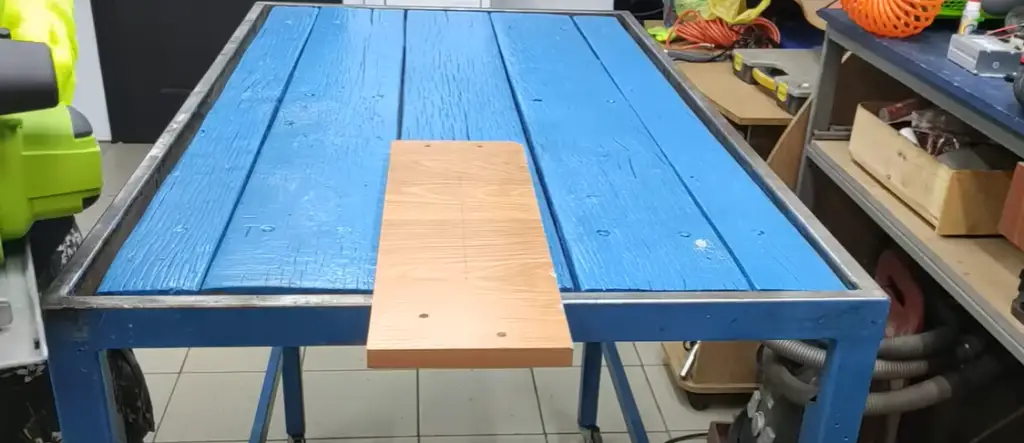
Step-by-Step Guide to Sharpening a Circular Saw Blade
Step 1: Detach the Blade from the Circular Saw
Before you begin sharpening your circular saw blade, it’s important to take a few precautionary steps to ensure safety and proper handling. First, make sure to completely detach the blade from the saw itself. This can typically be done using a wrench or screwdriver, depending on the type of hardware used to secure the blade. Once detached, carefully place the blade on a clean and flat surface, such as a workbench or table, to provide a stable and secure platform for the sharpening process. Taking these extra measures will help to prevent accidents and ensure that you can confidently and effectively sharpen your circular saw blade.
Step 2: Inspect the Blade and Determine the Type of Sharpening Needed
Once you’ve carefully removed the blade from your circular saw, take a few moments to thoroughly inspect it. Look closely for any chips or nicks in the teeth, examining each one individually. Assess the severity of the damage and decide on the appropriate course of action. If you notice only minor wear and tear, a simple sharpening session may be sufficient to restore its cutting performance. However, in the unfortunate event that your circular saw blade has suffered more significant damage, such as bent or broken teeth, it may be necessary to consider replacing the blade altogether. By carefully evaluating the condition of your blade and taking the appropriate steps, you can ensure optimal cutting results and prolong the life of your tools.
Step 3: Choose the Correct Tool for Sharpening
Now that you’ve thoroughly inspected your circular saw blade and carefully considered the best course of action, it’s time to select the appropriate sharpening tool. The choice of tool depends on the specific type of blades you have. For highly durable carbide-tipped blades, a diamond file is recommended due to its superior hardness and precision. On the other hand, if you’re working with plain steel blades, an ordinary metal file should suffice, providing adequate sharpening capabilities for this type of blade. By making an informed decision based on the specific characteristics of your blades, you can ensure optimal sharpening results and prolong the lifespan of your valuable cutting equipment.
Step 4: Begin Sharpening
Now that you’ve selected the proper tool for sharpening your circular saw blade, it’s time to start the process. Begin by holding the file firmly in one hand and the blade in the other, making sure to keep your fingers clear of the teeth. It’s important to keep the saw facing away from you at all times for safety reasons. Using steady and even strokes, lightly slide the file across each individual tooth, working in a smooth back-and-forth motion until all sides have been sharpened. Be sure to evenly sharpen both sides of the blade, ensuring that each tooth is attended to in the process.
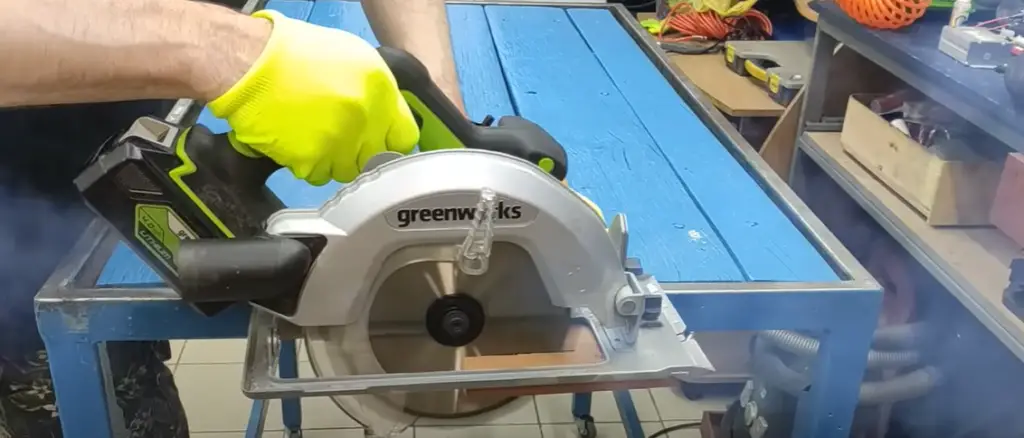
Step 5: Test and Adjust for Optimal Performance
Once you’ve finished sharpening all the teeth on your circular saw blade, it’s time to test its performance. Reattach the blade to the saw and cut a few pieces of scrap wood. Observe the results and adjust accordingly, using the same filing techniques as before if needed. Once you’re satisfied with your blade’s performance, it’s time to clean up and store away your sharpening tools properly for future use.
With this five-step process, you can expertly sharpen your circular saw blades and optimize their performance. By taking the time to properly assess, select and use the right tools, you can ensure reliable cutting results with minimal effort. With a bit of patience and skill, you’ll be able to maintain your valuable cutting equipment for years to come [2]!
Blade Sharpening Tips
Invest in a Quality Set of Circular Saw Blades to Minimize Sharpening
When it comes to woodworking, having a quality set of circular saw blades is not only essential but can also significantly minimize the need for frequent sharpening. By investing in high-grade materials and opting for an experienced manufacturer, you can ensure optimal cutting accuracy and enhance the longevity of your blades. Additionally, it is crucial to ensure that the blades you choose are compatible with your saw to avoid any potential damage that could occur down the line. Taking these factors into consideration will ultimately result in better performance and a more satisfying cutting experience for all your woodworking projects.
Practice on Broken Blades, So You Don’t Damage Usable Ones
If you’re just starting to sharpen your circular saw blades, it is best to begin with a broken blade that can no longer be used. This way, you can practice and hone your skills before attempting to sharpen a usable blade. It is also recommended that you use an old or cheap file before using an expensive sharpening tool on your more expensive blades to avoid any potential mistakes.
Use the Correct Blade for the Right Task
Knowing which circular saw blade is more suitable for a specific task can save you time and the hassle of having to sharpen your blades frequently. For instance, when cutting through thicker materials such as hardwood or plywood, it is best to use a rip blade that has more teeth; whereas, crosscut blades are designed for finer cuts and should be used on softer materials such as MDF or particle board. Selecting the right blade for your task will not only help you achieve a more precise cut, but also reduce the amount of sharpening required over time.
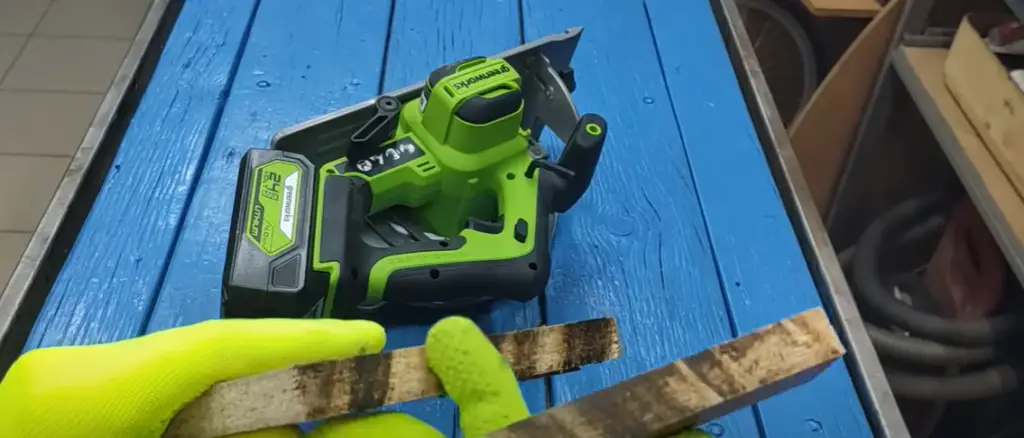
Regularly Clean Your Saw Blades
On top of selecting the right blade for your project, regular cleaning is essential to ensure optimal performance and longevity. Simply use a brush or cloth to wipe away sawdust, dirt, and other debris that accumulates on the blade. It is also important to check that all screws are secure and adjust them if necessary as this can help reduce vibration which can damage both the blade and the saw. By cleaning and maintaining your blades regularly, you can maintain their sharpness longer and ensure a better cutting experience.
Store the Saw Blade in a Dry Area
Finally, it is important to store your circular saw blades in a dry and secure area. Moisture can cause the metal on the blade to corrode and weaken over time so make sure to keep it away from humid areas or any other type of moisture. Additionally, always put the blade back in its original case after use as this will protect it from getting damaged by other tools in your workspace. Keeping the blade in top condition will ensure that it lasts you for years to come and maintains its sharpness.
By following these tips, you can keep your circular saw blades sharp and get the most out of them without having to worry about frequent repairs or replacements. With a few simple steps, you can ensure that they stay in peak condition and deliver the best results every time. So, stay sharp and make sure your saw blades are too!
Caring for Your Saw Sharpeners
Just like the blades of your saws, you should also regularly maintain and clean your sharpeners. This includes using a brush to remove any debris or dirt that might have accumulated on the sharpening stones. If your saw blades are left uncleaned for too long, dirt and other debris can dull their edges and make them less effective while also reducing the life of your sharpeners.
Cleaning is not the only maintenance task you should regularly perform when caring for your sharpening tools. You should also periodically check your stones for any wear or damage that has occurred. This will help you ensure that your saw blade remains sharp and in good condition for a longer amount of time, allowing you to finish your projects without having to frequently sharpen them.
Finally, it is important to store your sharpeners properly when not being used. Storing them in a dry place away from excessive heat or moisture will help extend their lifespan and ensure that they are in good condition when you need to use them.
By taking the time to properly care for your saw sharpener, you can make sure that it remains reliable and effective for years to come, allowing you to get more out of your tools with sharper blades and better performance. With a little bit of regular maintenance, you can keep your saw blades sharp and ready for any job.
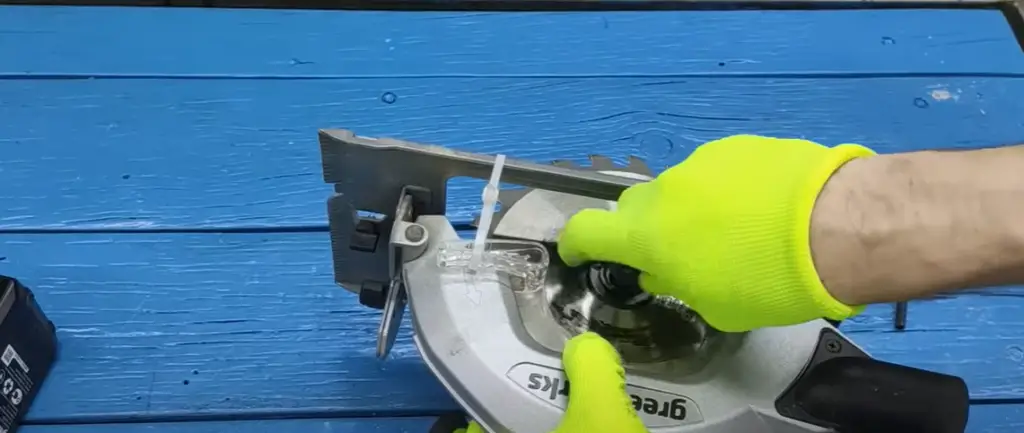
How to use and maintain Circular Saw Blades?
Circular saw blades are an important tool for any woodworking project. They can be used to make accurate cuts in a variety of materials and thicknesses, but they must be kept sharp to perform their best. To ensure your circular saw blade remains sharp and performs at its peak level, some key steps should be followed.
First, make sure your circular saw blade is compatible with the type of material you are using. Different types of blades are designed to work best with certain materials, so it’s important to get the right type of blade if you want optimal results.
Second, keep your circular saw blade clean and free of any debris. This will ensure that it runs smoothly and won’t get clogged. Be sure to check the tension of your blade often, as it can become loose over time and may need to be tightened.
Third, regularly sharpen your circular saw blade to maintain its cutting power. This is especially important if you are using softer woods or thin materials that require a sharp edge for precise cuts. Many hardware stores offer services to sharpen your circular saw blade, or there are products available that allow you to do it yourself.
Finally, store your circular saw blade properly when not in use to prevent rust and other damage. A wheeled storage case is ideal for keeping your blades safe and secure.
Following these tips will help keep your circular saw blades sharp and able to make precise cuts. Remember, the better care you take of your blades, the longer they will last and the better your projects will turn out!
FAQ
Is it worth sharpening circular saw blades?
Yes, it is worth sharpening circular saw blades. Regular sharpening of your circular saw blade will ensure that it runs smoothly and efficiently and cuts more accurately. It also helps extend the lifespan of the blade, saving you money over time. Sharpening your blade regularly also reduces kickback when cutting which increases safety.
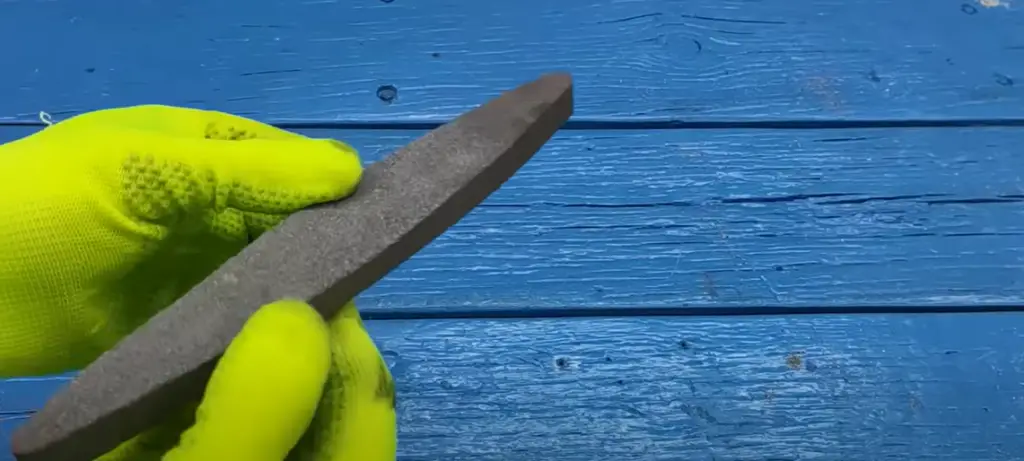
How often should I sharpen circular saw blades?
It is recommended to sharpen your circular saw blade after every 5-10 hours of use, depending on the type and frequency of the projects you are working on. To be safe, it’s best to inspect the cutting edge of your blade at least twice a year and sharpen it as needed.
What is the best way to sharpen circular saw blades?
The best way to sharpen a circular saw blade is with a sharpening stone or grinding wheel. Before you start, make sure that the power is off and that the blade has cooled down completely. Secure the blade in a bench vise and carefully sharpen each of its teeth one at a time. Make sure to sharpen both sides of the teeth evenly and take your time. Once you are done, wipe off any excess dust or debris with a clean cloth before putting the blade back in use.
Can I use an angle grinder to sharpen circular saw blades?
Yes, an angle grinder can be used to sharpen circular saw blades, but it is not recommended for those who are just starting out or lack experience in handling power tools. Angle grinders, while versatile, require a certain level of skill and caution to ensure safe and effective sharpening. Improper use of an angle grinder can potentially cause damage to the teeth of a blade, compromising its performance and durability. Therefore, it is best to entrust this task to experienced professionals who possess the necessary expertise to handle angle grinders with precision and care. Their knowledge and skill set will ensure that the circular saw blades are sharpened effectively and without any risk of damage.
How do you sharpen a saw blade by hand?
Sharpening a saw blade by hand is possible, but it will take more time and require greater skill. Start by securing the blade in a bench vise or clamping it to a stable surface. Then use a round file to sharpen the teeth one at a time. Make sure to apply even pressure and move the file back and forth along the length of each tooth. This will help ensure that the blade is evenly sharpened and that it performs optimally in the future. Once you are done, use a cloth to wipe off any leftover debris or dust. If possible, also run the blade through a metal file cleaner before reinserting it into your circular saw.
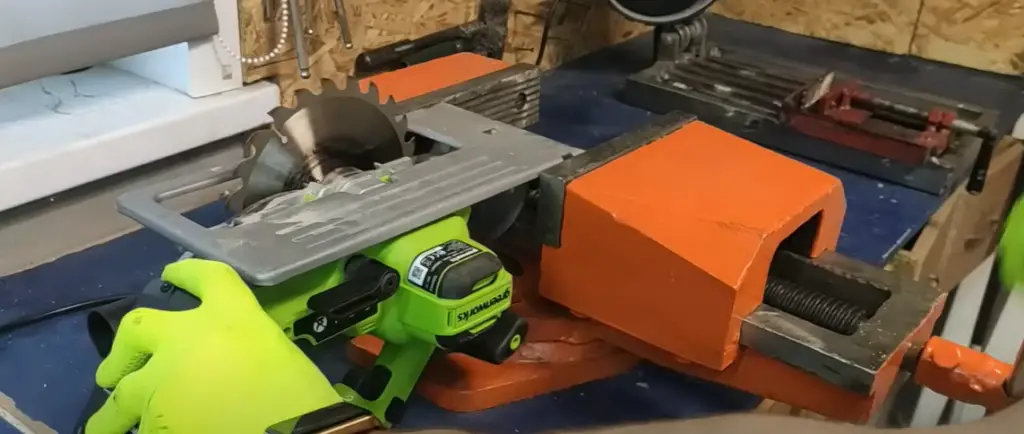
What tools do I need to sharpen a circular saw blade?
The basic tools you need to sharpen a circular saw blade include a vise, a round file, and a metal file cleaner. You may also need some protective gloves and eyewear depending on the type of work you are doing. Angle grinders can also be used but should only be handled by experienced professionals with knowledge of how to use the tool safely and effectively.
Are there any risks associated with sharpening a circular saw blade?
Yes, there are certain risks associated with sharpening a circular saw blade. Improper use of a power tool can cause damage to the teeth of the blade and result in poor cutting performance or even injury if pieces of the damaged teeth fly off. Therefore, it is essential to handle circular saw blades and sharpening tools with caution at all times. Following the steps outlined above can help minimize the risks associated with sharpening a circular saw blade.
What safety precautions should be taken when sharpening a circular saw blade?
When sharpening a circular saw blade, make sure that you are wearing protective gloves and eyewear. Secure the blade in a vise or clamp it to a stable surface before sharpening. Make sure that the power is off and that the blade has cooled down completely before you start. Also, use a round file instead of an angle grinder for sharpening as this will help ensure precision and accuracy. Finally, check your work after sharpening to make sure that the blade has been properly sharpened and is free of any debris or dust.
Is it worth sharpening circular saw blades by yourself?
Yes, it is worth sharpening circular saw blades by yourself if you have the necessary skill and experience. Taking the time to sharpen your own blade will help keep it in good condition and extend its lifespan, saving you money over time. However, if you lack the expertise or the necessary tools, it may be better to leave this task to experienced professionals who can handle the job with safety and accuracy.
What is the difference between sharpening a circular saw blade and filing it?
Sharpening a circular saw blade involves grinding its teeth to an optimal level while filing it entails putting a new edge on the blade with a metal file. While both activities are important in keeping your circular saw blade in top condition, sharpening is typically done more frequently as it helps maintain a blade’s cutting performance and accuracy. Filing, on the other hand, should only be done when necessary to restore the blade’s original shape or size.
How many times can you sharpen a circular saw blade?
It is possible to sharpen a circular saw blade up to 10 times, depending on its condition. If the blade has become too worn or damaged, it may need to be replaced in order to ensure optimal cutting performance and safety. Therefore, it is important to inspect and sharpen your circular saw blades regularly so that you can identify any issues before they become serious problems. With proper care and maintenance, your circular saw blade should last a long time and provide you with reliable cutting performance.
Useful Video:How to sharpen a circular saw blade*
Conclusion Paragraph
To sharpen a circular saw blade, the most important consideration is to take your time and be patient. With patience and practice, you can learn how to sharpen a circular saw blade quickly and effectively without compromising its quality or longevity. Remember that sharp blades are essential for achieving clean cuts and precision in carpentry and other heavy-duty projects. Whether you choose manual sharpening methods or decide to invest in an automated sharpening machine, it’s important to be familiar with the proper techniques and safety protocols. With the right knowledge and tools, you can ensure that your circular saw blades remain in top condition for many years to come.
References:
- https://toolever.com/2943/signs-your-circular-saw-blade-needs-sharpening-or-replacement/
- https://mellowpine.com/blog/how-to-sharpen-a-circular-saw-blade/






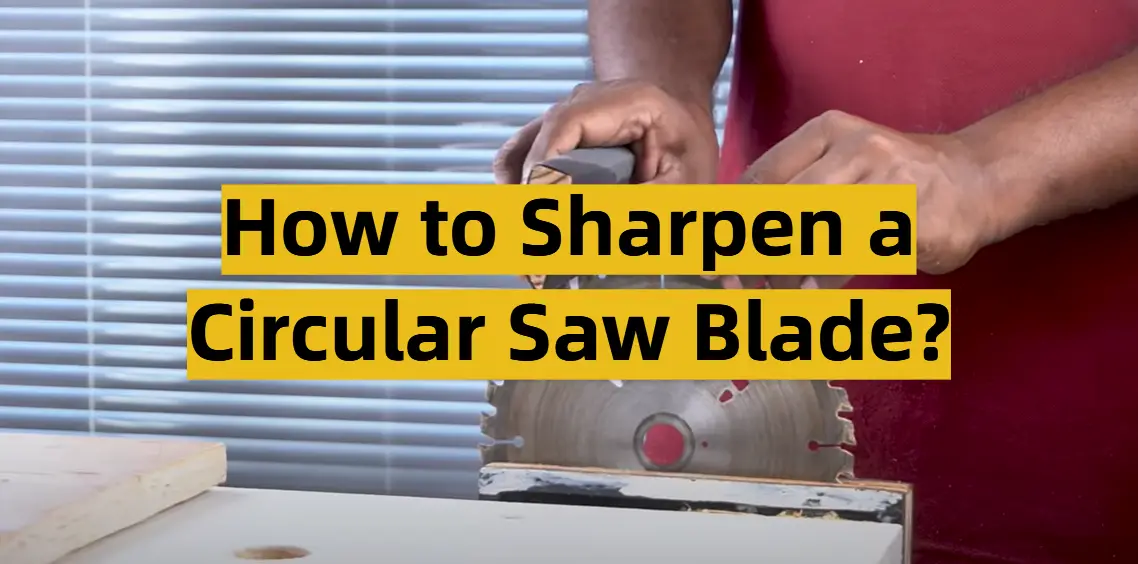








Leave a Reply